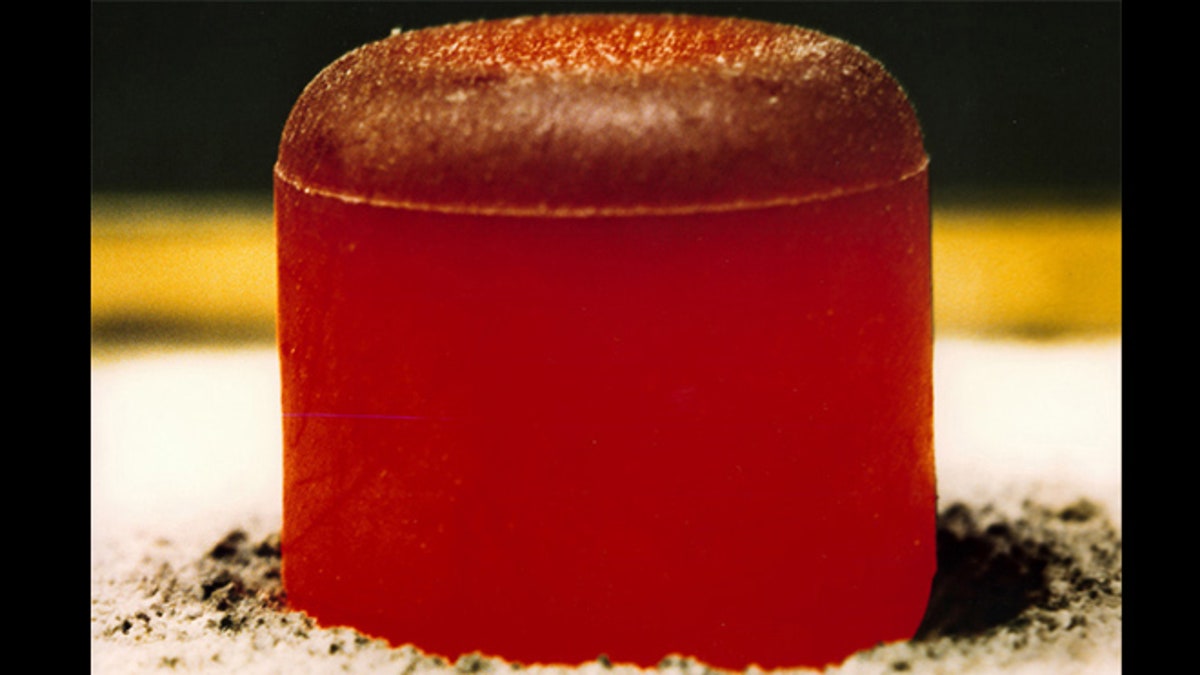
A glowing red hot pellet of plutonium-238 dioxide to be used in a radioisotope thermoelectric generator for space missions. (NASA)
After a 25-year hiatus, the Unites States has produced its first non-weapons grade plutonium needed to power space probes when solar energy won’t suffice.
NASA has been using a radioactive material called plutonium-238 to power its deep space probes since the 1970s.
The nuclear-powered spacecraft include the twin Voyager probes, now heading out of the solar system, the Mars Viking landers, the Galileo and Cassini missions at Jupiter and Saturn, respectively, and most recently the Mars Curiosity rover, which is seven months into a planned two-year mission.
ANALYSIS: The Pioneer Anomaly: a Wild Goose Chase?
[pullquote]
The plutonium naturally radiates heat as it decays, which can be converted into electricity with a device known as a radioisotope thermoelectric generator, or RTG.
The U.S. produced its own supply of plutonium-238 until the late 1980s, when the Department of Energy’s reactors at the Savannah River Site in South Carolina, where the plutonium was generated, were shut down for safety and environmental issues. NASA then turned to Russia to purchase plutonium, but that supply line dried up in 2010.
Since then, the Department of Energy (DOE), working in collaboration with NASA, has been trying to restart domestic production of plutonium-238. Early results are promising.
After encapsulating the radioactive starter material neptunium, putting it into a reactor at Oak Ridge National Laboratory in Tennessee and radiating it for a month, the DOE did successfully generate plutonium, said Jim Green, chief of NASA’s planetary science division.
“This is a major step forward,” Green said at recent Mars exploration planning group meeting.
“We’re expecting reports from (the DOE) later this year on a complete schedule that would then put plutonium on track to be generated at about 3.3 pounds a year, so it’s going quite well,” Green said.
The fresh plutonium has the added benefit of reviving NASA's small and decaying supply of older plutonium still in storage.
ANALYSIS: Could Mars Rover Curiosity Come Home?
“It fairly old -- more than 20 years,” Green said, “When we add newly generated plutonium through this process to the older plutonium in a mixture of one new-to-two old units, we can actually revive that and get he energy density we need. So for every 1 kilogram [2.2 pounds], we really revive 2 other kilograms of the older plutonium by mixing it.”
“It’s a critical part of our process to be able to utilize our existing supply at the energy density that we want it at,” he added.
Among the upcoming missions that likely will need nuclear power is a follow-on Mars rover based on Curiosity’s design and now-proven sky crane landing system.
Additional safety and environmental reviews will be needed if the rover, like Curiosity, will be nuclear powered. A lighter-weight and more energy-efficient generator may be available by the time the new rover is built but engineers may opt for the older model anyway.
The upgraded device, called an Advanced Stirling Radioisotope Generator, or ASRG, is expected to produce about four times more electrical power per kilogram of plutonium-238 than older models.
On cold Mars, that’s not always an advantage.
ANALYSIS: Mars Rover Plutonium Triggers Launch Precautions
“The (RTG) that’s used on Curiosity makes use of waste heat to warm the electronics in the interior of the rover,” said Michael Meyer, NASA’s Mars Exploration program chief scientist.
“If you use an ASRG ... you don’t have as much heat for the interior of the rover, so you buy a second problem,” he said.
NASA expects to issue a solicitation for science instruments for the new rover this summer. The rover is targeted for launch in 2020.



















